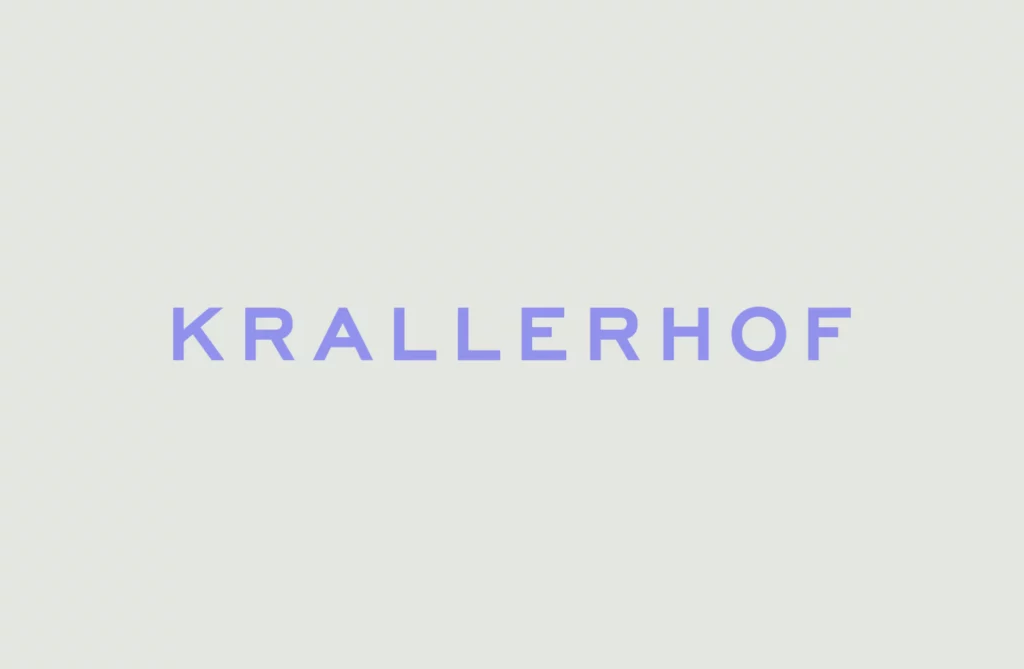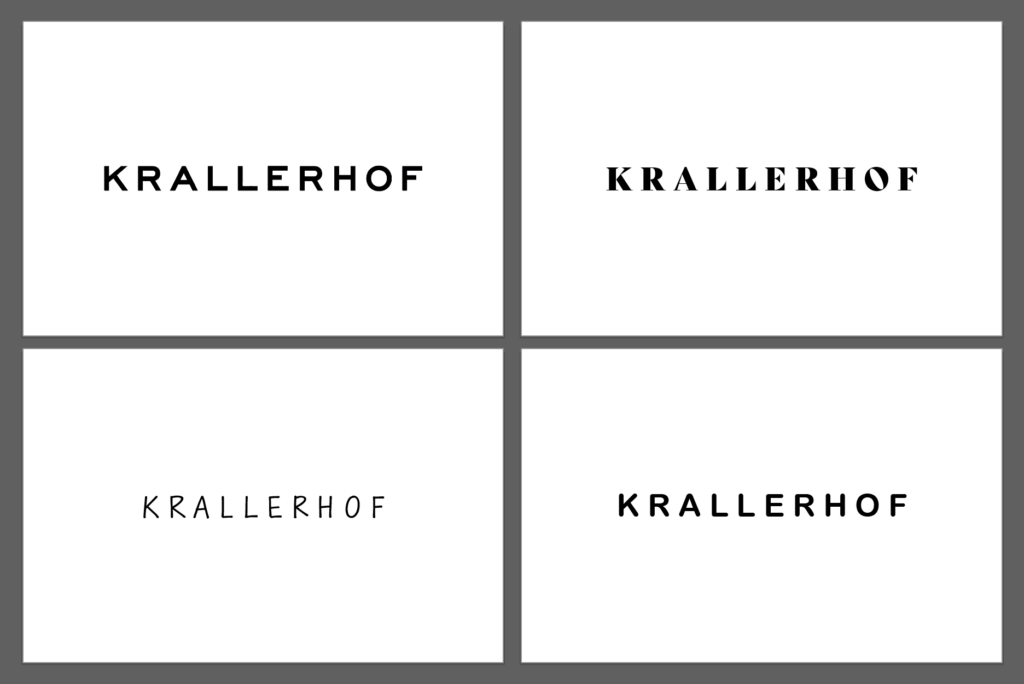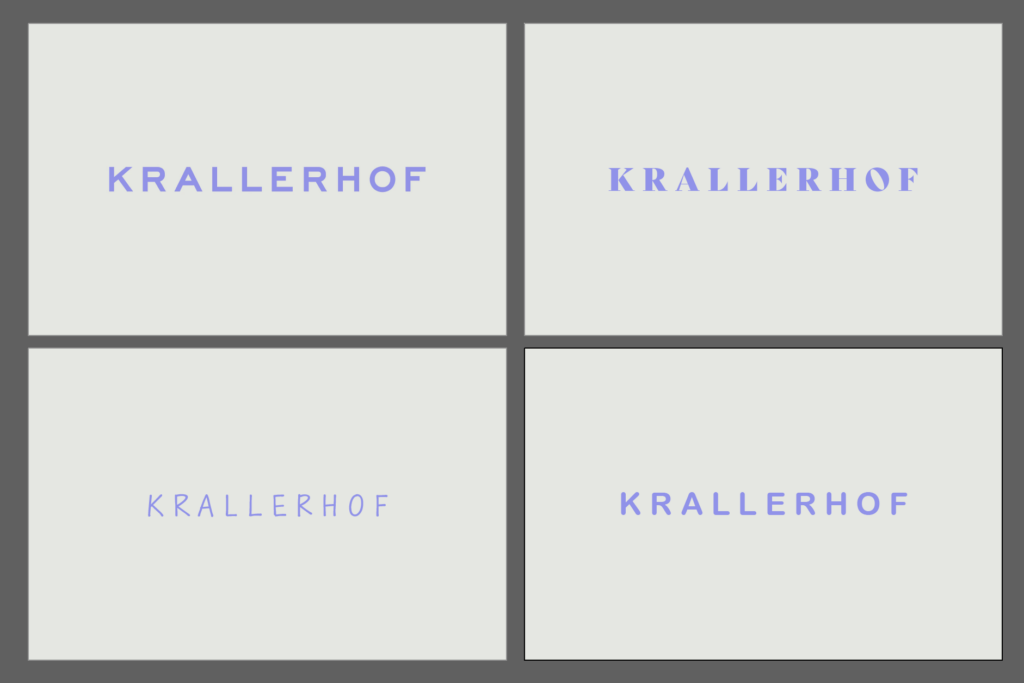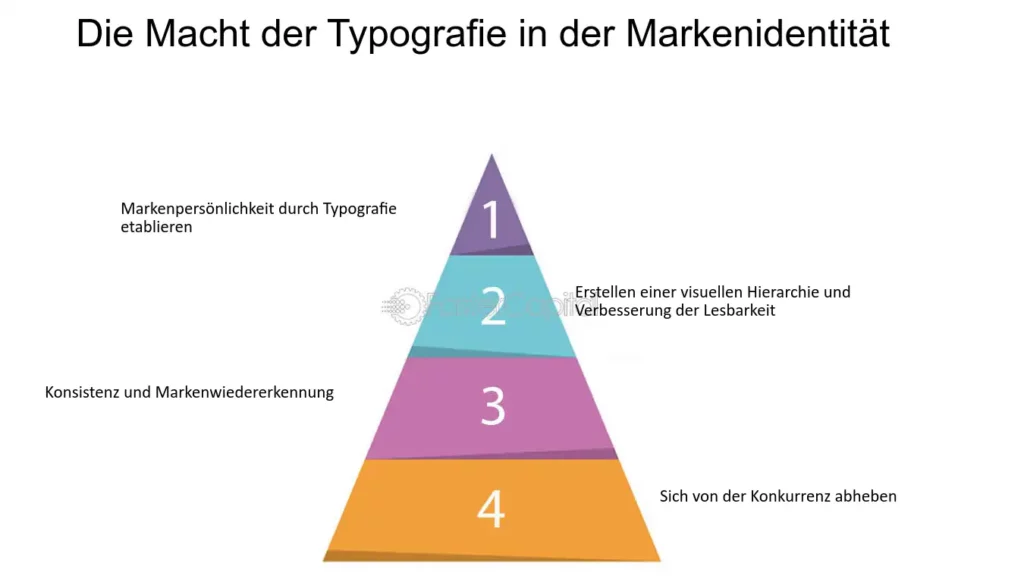My survey produced the following results:
General questions about typography
- Which logo appeals to you the most?
The original logo (Sans Serif) was preferred by most participants, which could be due to its clear and modern design. - How professional does each logo variant look?
Original logo (Sans Serif): Scored an average of 4.5 out of 5. It was rated as the most professional.
Serif font: Averaged 3.8 out of 5 points. It was perceived as professional but more traditional.
Rounded Sans Serif: An average of 3.5 out of 5 points. This variant was perceived as friendly and modern, but slightly less professional.
Handwriting: Average 2.9 out of 5 points. Handwriting was considered the least professional, but personal and inviting. - What emotions does each logo variant evoke in you?
Original logo (Sans Serif): Trustworthy, modern, professional.
Serif font: Traditional, elegant, sophisticated.
Handwriting: Personal, friendly, individual.
Rounded Sans Serif: Modern, friendly, accessible.
Specific questions about typography
- In your opinion, which logo best conveys the brand of an upscale hotel?
The original logo (Sans Serif) was seen by the majority as the logo that best conveys the brand of an upscale hotel. - Which logo do you find most inviting?
The rounded Sans Serif was perceived as the most inviting, closely followed by the original logo. - Which logo variant looks the most modern?
The original logo (Sans Serif) and the rounded sans serif were seen as the most modern variants. - Which logo variant looks the most traditional?
The serif font was rated as the most traditional variant.
General questions about color
- Has your perception of the logo changed with the addition of colors?
About 70% of participants stated that their perception has not changed. - If so, how did the perception change?
Those who did notice a change mentioned that the colors made the logo appear more vibrant and inviting.
Specific questions about color
- Which color logo appeals to you the most?
The original logo (Sans Serif) in color was again the most preferred. - How professional does each color logo variation look?
Original colored logo (Sans Serif): Scored an average of 4.5 out of 5. It was still rated as the most professional.
Serif font in color: Averaged 3.8 out of 5 points.
Rounded Sans Serif in color: Average 3.5 out of 5 points.
Handwriting in color: Average 2.9 out of 5 points. - What emotions does each color logo variant trigger in you?
The colored logos triggered similar emotions as their black and white counterparts, but an added sense of vibrancy was often mentioned. - In your opinion, which color logo best conveys the brand of an upscale hotel?
Mostly the original colored logo (Sans Serif). - Which color logo do you find most inviting?
The rounded Sans Serif in color was perceived as the most inviting, followed by the original logo. - Which logo variant looks the most modern?
The original colored logo (Sans Serif) and the rounded Sans Serif were seen as the most modern variants. - Which logo variant looks the most traditional?
The colored serif font was rated as the most traditional variant.
Summary:
The survey shows that the original logo (Sans Serif) performed best in both black and white and in color and was perceived as professional, modern and trustworthy. The use of color did not result in a significant change in perception for most participants. The serif font was perceived as traditional, while the rounded Sans Serif was perceived as inviting and modern. Handwriting scored lowest in terms of professionalism, but was rated as personal and friendly.



